When working with methods in PHP, it is essential not only to know how to process data but also how to cleverly use return values. Return values allow you to utilize the result of a method, whether for further processing or for display. This guide will show you step by step how return values work in PHP methods and how you can use them effectively.
Key insights
Return values in PHP methods are central to effectively utilizing results. By using the return statement, you can return values from a method and reuse them in the calling environment.
Methods in PHP and their return values
To understand how return values work in methods, it is important first to consider the structure and flow of methods in PHP. Your PHP objects and their methods are defined but are executed only when called. Here we take a look at the program flow.
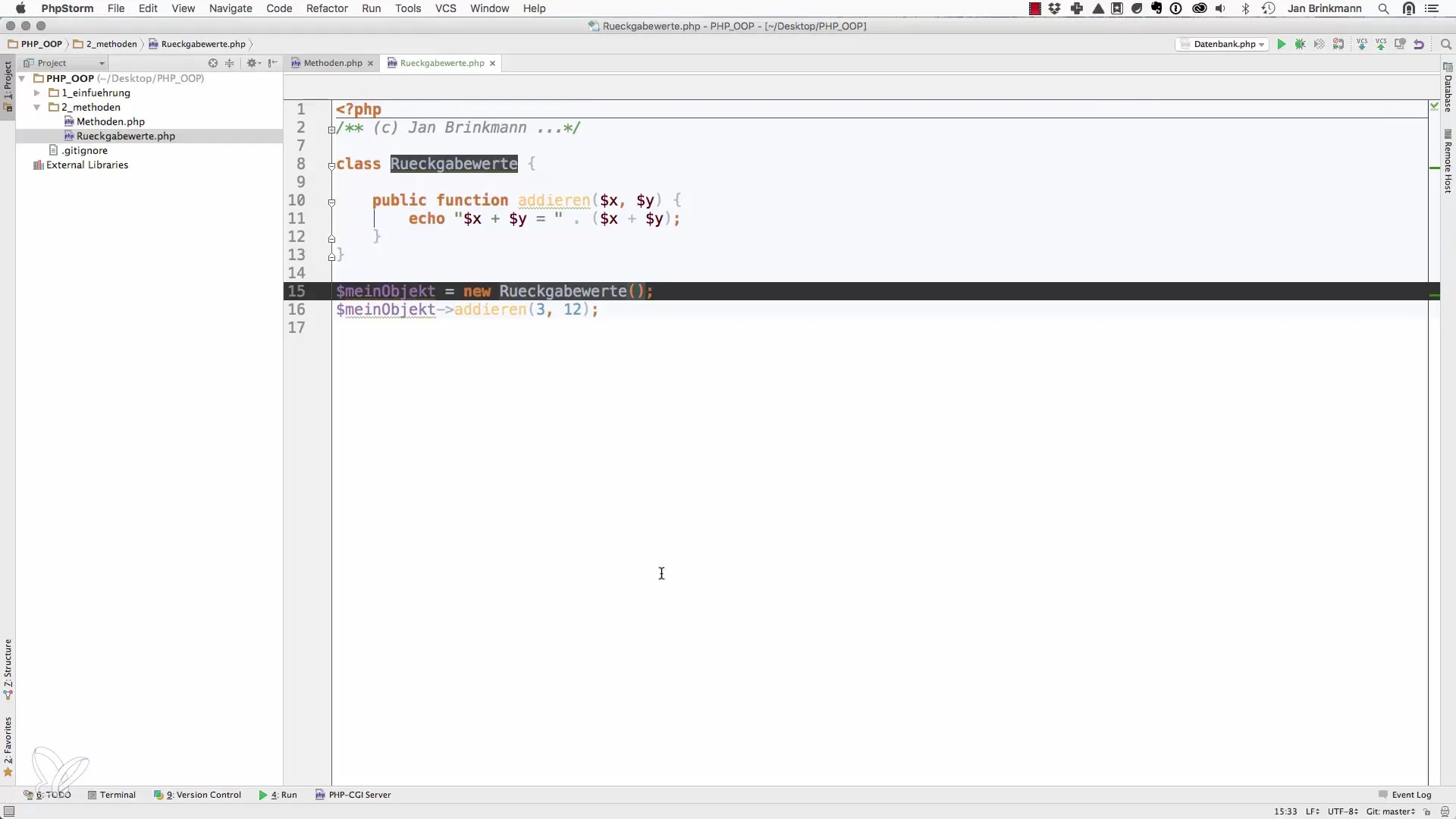
First, you need to create an object that contains the method you want to call. Once the object is instantiated, you can call the method. In this case, we are looking at a method named add.
When you call the add method, the program jumps to that method and executes the code segment contained within it. Here, you have access to the parameters you pass during the call.
The special thing about return values is that you can not only calculate and output a value, but you can also return the result. This is particularly useful if you want to use the result later in your program.
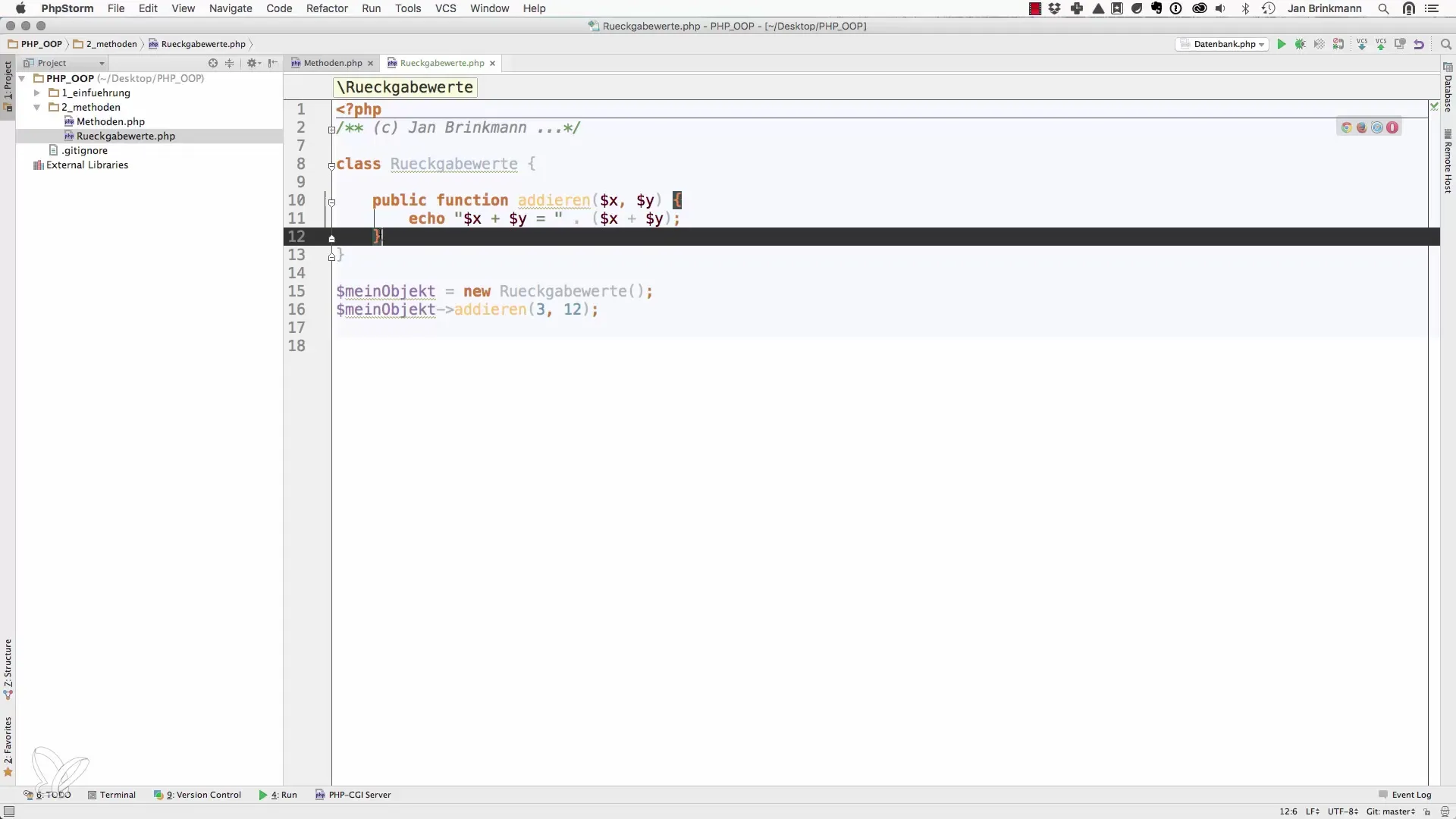
Implementing return values
To return a value, you use the return statement in PHP. Instead of outputting the result directly, you return it so that you can work with it later in the code.
In our example, we modify the method to return the sum of the two parameters X and Y. Instead of displaying the value directly in the method, we set return X + Y.
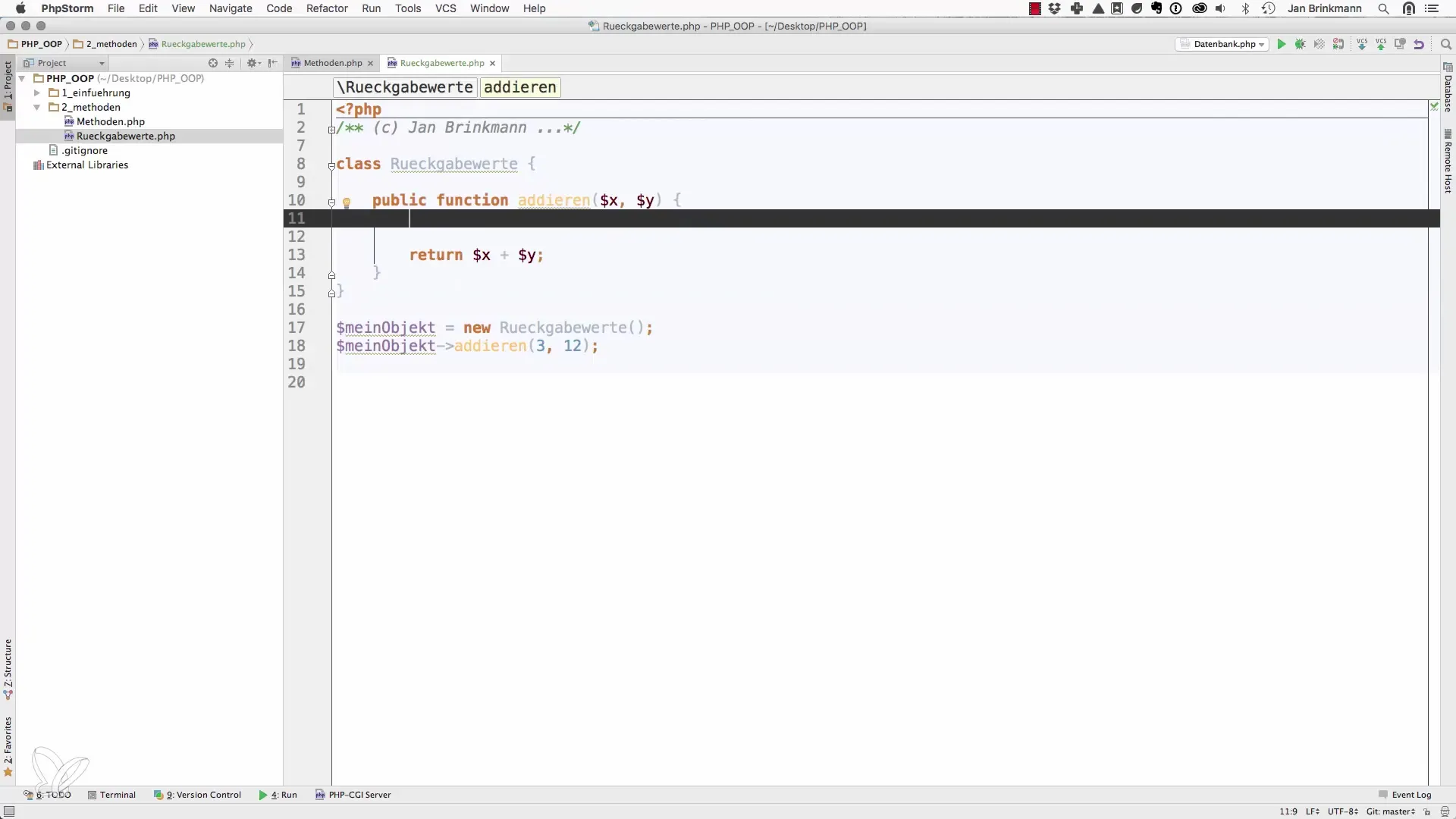
If you want to separate the calculation, you can also use a temporary variable for the sum. It looks like this: you first calculate the sum and then return it.
Now, if you store the value of the method in a variable, you can output, among other things, the sum. For example:
Here is the code block that combines the sum and then outputs it with echo. You could also transfer the result to another variable for further processing.
Now, when you enter different values for X and Y, you can easily retrieve the result. For example, instead of 3 and 12, you just take 5 and 17 to continue understanding the basic concept.
Using variables and return values
Another aspect of return values is that you can use variables directly to store your input values. For example, you can define A and B and then use them in the method.
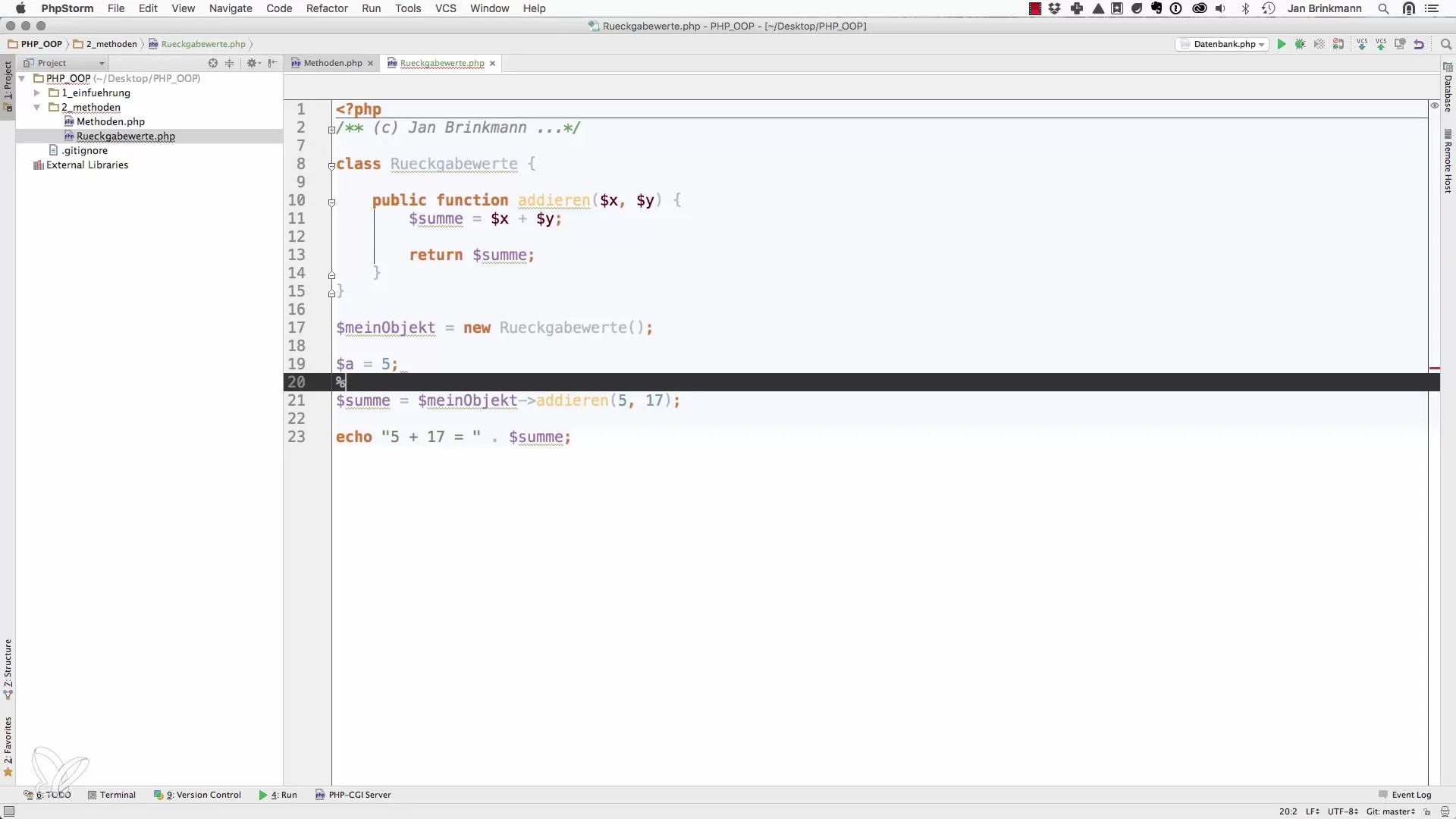
If you use the values of A and B in your method, you will get 5 + 17 = 22 as the result. Here, the concept of return values is very helpful since you can calculate the value in one place and use it in another.
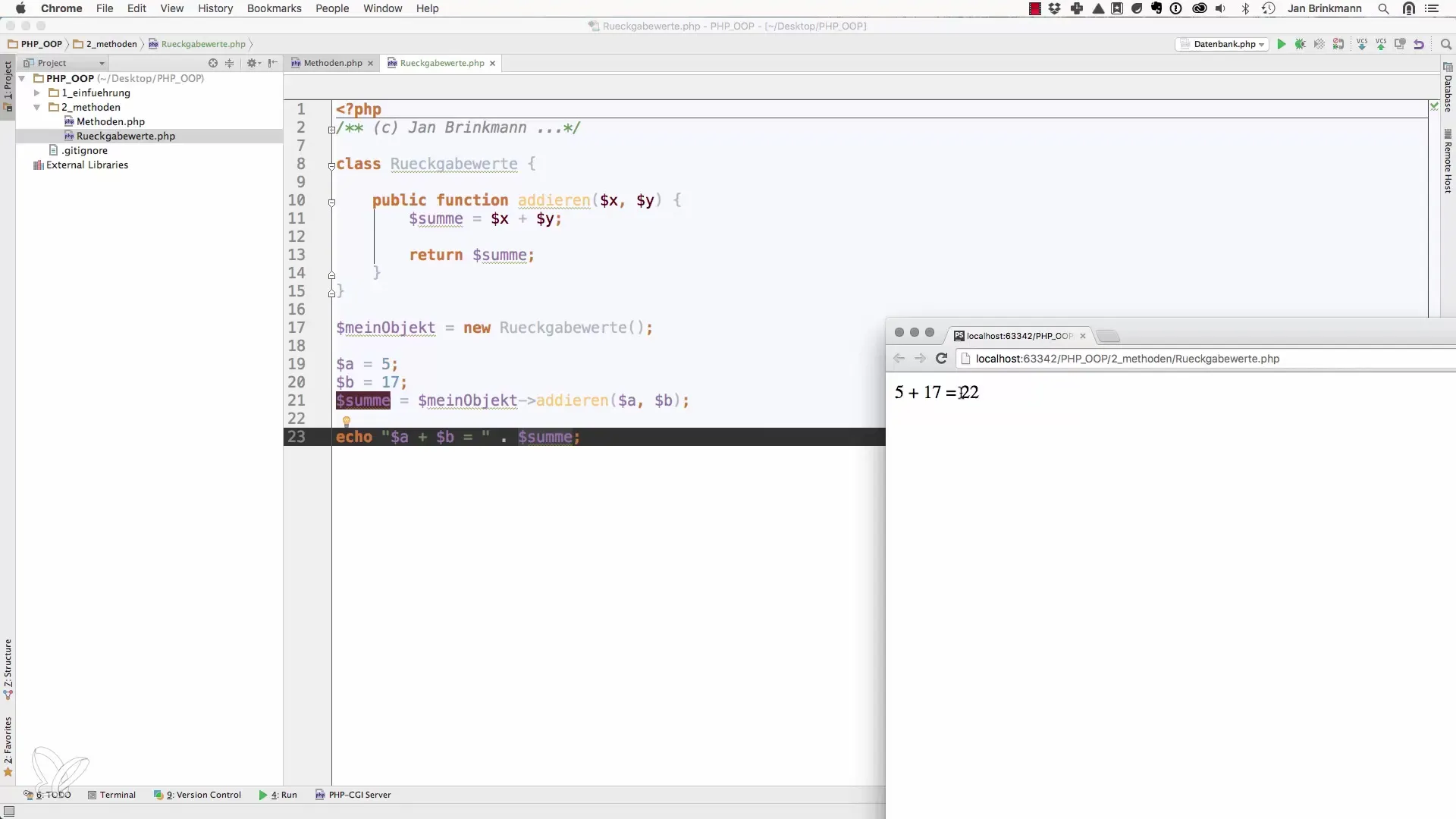
This clearly shows that you gain tremendous flexibility with return values in PHP. The return keyword is crucial - it allows you to pass values and integrate them into the context where they are needed.
Summary – Return values in object-oriented web programming with PHP
It was explained how return values are used in methods to efficiently process and reuse results. Understanding the return statement is essential to fully leverage the potential of object-oriented programming in PHP.
Frequently Asked Questions
How do return values work in PHP methods?Return values are returned using the return keyword, allowing the method's result to be passed to the calling location.
Why should I use return values?Return values allow you to further process the results of calculations or operations in your code, rather than just displaying them.
Can I return multiple values from a method?PHP does not support multiple return values, but you can return an array or an object to encapsulate multiple values.


